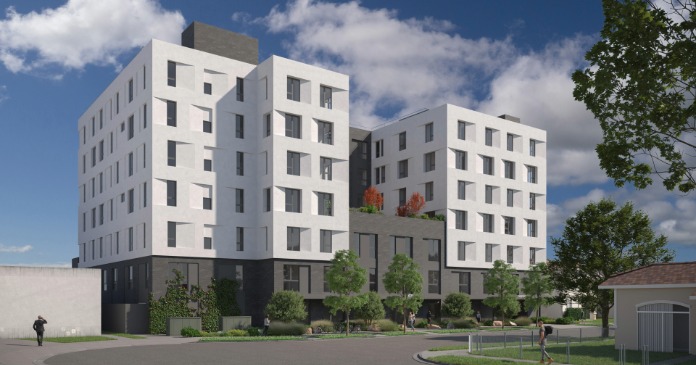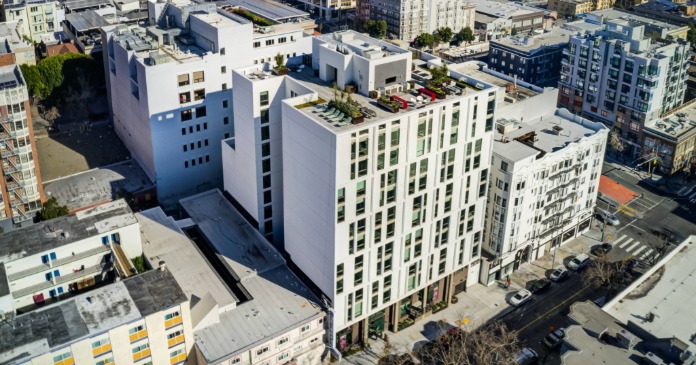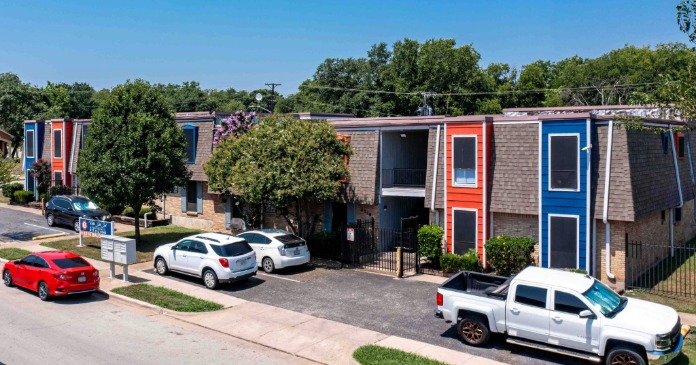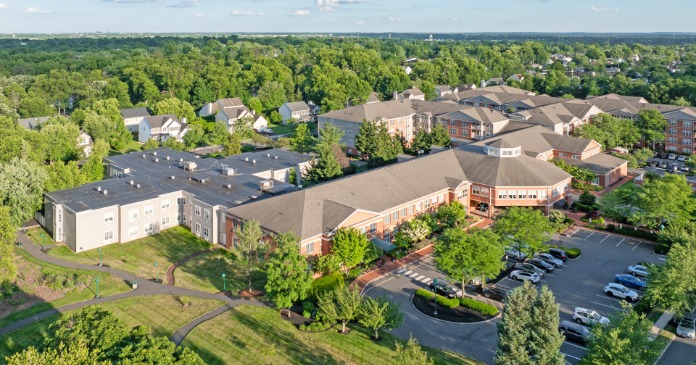The Trepp T-ALLR Bank CRE Loan Performance report for Q2 2025 looks at multifamily housing loan activity. It describes how well banks are navigating the current climate of shifting economic and policy conditions. The analysis is based on bank balance sheet data from Trepp’s Anonymized Loan-Level Repository (T-ALLR), offering views into market conditions, risk behavior, and performance metrics.
Origination volume is resilient
Bank origination volumes for multifamily loans demonstrated resilience in Q2 2025, continuing a trend seen since late 2023. Multifamily and office properties led originations by dollar volume. This is similar to what occurred early in the pandemic period when lending conditions faced extraordinary pressures.
With expectations of modest easing by the Federal Reserve on policy rates, there is cautious optimism around future financing costs — an important factor for multifamily investors evaluating new acquisition or refinancing opportunities. Nearly half of all bank CRE originations this quarter involved multifamily assets, reflecting both enduring demand and banks’ appetite for exposure to this sector. Much of current lending is being done on an interest-only, floating-rate basis, underscoring how lenders and borrowers are compensating for rate volatility in an uncertain environment.
Charge-off and delinquency trends
The report examines how banks manage troubled loans through net charge-offs, which represent recognized losses and signal broader credit risk. Although headlines have focused on office sector distress, the multifamily segment has registered an elevated charge-off rate relative to its own historical averages, pointing to some emerging credit pressure. However, there are signs of stabilization: the cumulative charge-off balance for multifamily loans declined to $114 million in Q2 2025. It had reached a multi-year high the prior quarter. This suggests that, while problems exist — especially in oversupplied submarkets — active bank workout and asset management efforts are having a positive effect.
On delinquencies, multifamily loans experienced a slight but meaningful improvement. The multifamily delinquency rate receded from 1.58 percent in Q1 2025 to 1.40 percent in Q2, offering some reassurance to market participants. This downward movement stands in contrast to delinquencies in industrial and retail, which are slowly rising. It demonstrates the relative strength of multifamily among CRE asset classes. The aggregate CRE delinquency rate for all property types held steady for a third straight quarter after a run-up between Q3 2022 and Q2 2024.
Criticized loans
Criticized loans — those assigned a risk rating of 6 or higher on Trepp’s 9-point scale — remain a closely watched risk indicator. In the report, Trepp points to considerable geographic variation in multifamily criticized loan rates, with sunbelt metros such as Houston posting higher levels of criticized loans.
Encouragingly, the Q2 2025 criticized loan rate for multifamily in Houston declined by almost 12 percentage points to 33 percent, highlighting improving local fundamentals in some regions. Some other large multifamily markets, including Phoenix, Dallas, and Miami, also showed improvements, with criticized loan levels declining by 2-11 percentage points over Q1. However, certain gateway cities, including Washington, New York, Chicago and San Francisco, saw criticized loan rate upticks. This likely reflects their more challenging supply-demand balance or heightened regulatory risk in those markets.
The data point to a divide among markets in multifamily performance. Properties situated in oversupplied markets are experiencing rising criticized loan balances, which may reflect ongoing pressure on asset values and debt service. Conversely, regions with robust population growth and high multifamily demand appear more resilient. There, criticized loan rates are stabilizing and ongoing rent growth is offering support to absorption of new supply. This market divergence underscores the necessity for location-sensitive risk assessment and portfolio management discipline, as bank asset quality outcomes will increasingly be shaped by local economic strength and demographic momentum.
Economic policy context
One theme running through Trepp’s analysis is the interplay between monetary policy, economic growth, and real estate credit performance. As banks adapt to sometimes contradictory signals — inflationary pressures, evolving labor market conditions, and the Fed’s path on rates — their risk tolerance and lending behavior are adjusting. The report cautions that, while mortgage origination rebounds are positive, looming macro uncertainties continue to weigh on asset selection and underwriting standards. Multifamily loans, in particular, are at a crossroads: those tied to markets suffering from excess new deliveries face headwinds, while assets in high-demand regions benefit from stable or rising rents.
Given these dynamics, the sector’s future hinges on absorption of new supply, ongoing employment growth, and the ability of households to meet rent obligations despite rising rents. Lenders, borrowers, and equity investors will need to watch criticized loan trends closely as a signal for changing credit conditions. Asset selection, proactive loan management, and regional diversification remain paramount as banks seek to manage multifamily risk through an unsettled policy and growth cycle.
Data repository and methodology
The T-ALLR dataset employed in Trepp’s research aggregates more than $190 billion in bank balance sheet CRE loans from a diverse pool of institutions, offering significant breadth for analysis. By excluding construction loans and standardizing internal risk ratings, Trepp enables meaningful comparisons across property types, geographies, and timeframes.
The full report can be obtained here.












